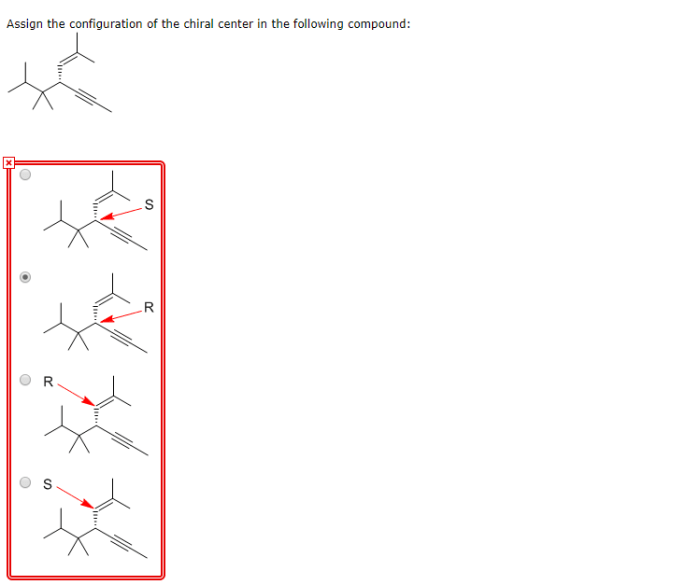Click on each chiral center in the cholesterol derivative below. – In the realm of organic chemistry, the concept of chirality plays a pivotal role in understanding the structure and properties of molecules. Click on each chiral center in the cholesterol derivative below to explore the fascinating world of chirality and its profound implications in chemistry and beyond.
Chirality, a term derived from the Greek word “cheir” meaning “hand,” refers to the property of a molecule that makes it non-superimposable on its mirror image. This unique characteristic arises from the presence of chiral centers, which are carbon atoms bonded to four different groups.
In this interactive exercise, we will delve into the identification, properties, representation, and reactivity of chiral centers, using a cholesterol derivative as our illustrative example.
Chiral Center Identification

Chiral centers are atoms that are bonded to four different groups. They are important because they can give rise to stereoisomers, which are molecules that have the same molecular formula but different spatial arrangements of their atoms.
To identify a chiral center, you need to look for an atom that is bonded to four different groups. The groups can be atoms, functional groups, or even other chiral centers.
Chiral Centers in the Cholesterol Derivative, Click on each chiral center in the cholesterol derivative below.
The cholesterol derivative shown below has three chiral centers. They are located at the carbon atoms marked with asterisks (*).

Chiral Center Properties: Click On Each Chiral Center In The Cholesterol Derivative Below.

Chiral centers have a number of important properties. First, they are not superimposable on their mirror images. This means that they cannot be rotated or flipped to look like their mirror images.
Second, chiral centers can affect the overall molecular structure. For example, the presence of a chiral center can make a molecule more rigid or flexible.
Third, chiral centers can influence the biological activity of molecules. For example, the enantiomers of a drug may have different pharmacological effects.
Chiral Center Representation
There are a number of different ways to represent chiral centers. One common method is to use wedge-and-dash notation. In this notation, solid wedges represent bonds that are coming out of the plane of the page, and dashed wedges represent bonds that are going into the plane of the page.
Another common method for representing chiral centers is to use Newman projections. In a Newman projection, the molecule is viewed down one of its C-C bonds. The front carbon atom is represented by a dot, and the back carbon atom is represented by a circle.
The chiral centers in the cholesterol derivative can be represented using either wedge-and-dash notation or Newman projections. The following figure shows the cholesterol derivative represented using wedge-and-dash notation.

Chiral Center Reactivity

Chiral centers can undergo a variety of reactions. One common type of reaction is substitution. In a substitution reaction, one of the groups that is bonded to the chiral center is replaced by another group.
Another common type of reaction that chiral centers can undergo is elimination. In an elimination reaction, two of the groups that are bonded to the chiral center are removed, forming a double bond.
The reactivity of chiral centers can be affected by a number of factors, including the nature of the groups that are bonded to the chiral center and the reaction conditions.
Popular Questions
What is the significance of chiral centers in biological systems?
Chiral centers play a crucial role in biological systems, as they can influence the interactions of molecules with enzymes, receptors, and other biomolecules. This chirality can affect the biological activity, metabolism, and even toxicity of molecules.
How can we determine the absolute configuration of a chiral center?
The absolute configuration of a chiral center can be determined using various techniques, including X-ray crystallography, NMR spectroscopy, and chemical methods. These techniques allow us to assign the correct spatial arrangement of the groups attached to the chiral center.
What are the different types of reactions that chiral centers can undergo?
Chiral centers can undergo a variety of reactions, including nucleophilic substitution, electrophilic addition, and cycloaddition reactions. The stereochemistry of these reactions can be controlled by the chirality of the starting materials, leading to the formation of enantiomerically pure products.
